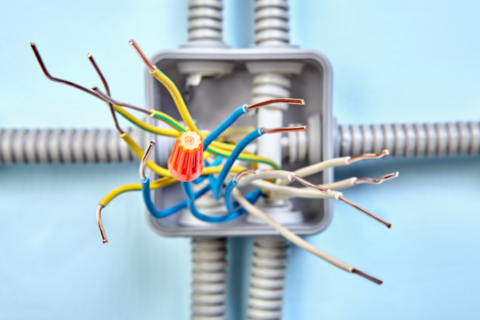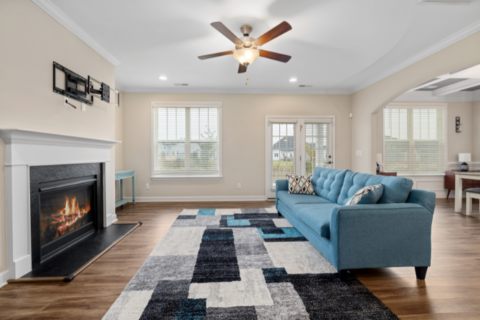Outlet Socket: A Homeowner’s Guide to Maintenance, Repair, and Installation
Outlet Socket
From powering our TVs to charging our phones, electricity is an essential part of our daily lives. And at the heart of it all is the outlet socket, the unsung hero of our homes. Without it, we wouldn’t be able to enjoy the convenience and comfort that electricity provides. Yet, many homeowners in Elmhurst, Providence County, Rhode Island may not give much thought to their outlet sockets until they stop working.
But worry not, for B&K Electric is here to shed light on all things outlet socket. B&K Electric is a family-owned and operated electrical business based in Warwick, RI, that is rooted in community and customer service. Our electricians have been proudly serving the residents of Cranston, Warwick, and all of Rhode Island for over seventeen years. We specialize in electrical repair, panel maintenance, and installation, making us the go-to electrician for homes and businesses in the Warwick area and the greater Providence Area.
In this article, we will provide a comprehensive guide to outlet sockets, covering everything from maintenance and repair to installation and safety tips. So, whether you’re a new homeowner looking to understand your home’s electrical system or a seasoned homeowner looking to upgrade your outlets, this article is for you.
Understanding Outlet Sockets
Let’s start with the basics. An outlet socket, also known as a receptacle, is a device that allows us to connect electrical devices to a power source. It contains one or more holes, or outlets, where we can plug in our devices’ power cords. Outlet sockets are typically installed on walls and can be found in every room of a house, providing electricity wherever and whenever we need it.
Types of Outlet Sockets
Outlet sockets may all look the same to the average homeowner, but there are actually several types with different features and functions. Each type has its own unique design and purpose, so it’s essential to understand the different types to determine which one is best suited for your needs.
1. Standard Outlet Sockets
Also known as duplex outlets, these are the most common type of outlets found in homes. They have two vertical slots and a round hole for grounding, allowing you to plug in two devices at once.
2. GFCI Outlets
GFCI (Ground-Fault Circuit Interrupter) outlets are designed to protect against electrical shock. They are commonly found in kitchens, bathrooms, and outdoor areas where there is a higher risk of water coming into contact with electrical devices. These outlets have ‘Test’ and ‘Reset’ buttons, and they automatically cut off power when they detect any imbalance in the circuit.
3. AFCI Outlets
AFCI (Arc-Fault Circuit Interrupter) outlets are designed to prevent fires caused by electrical arcs, which occur when electricity jumps between two broken wires or loose connections. These outlets are usually found in bedrooms and living rooms, where electrical fires can easily start.
4. USB Outlets
With the rise of USB-powered devices, many homeowners are now opting for USB outlets in their homes. These outlets have USB ports in addition to the standard outlets, allowing you to charge your devices directly without needing a bulky adapter.
Maintaining and Repairing Outlet Sockets
Now that you understand the different types of outlet sockets let’s talk about maintenance and repair. Like any other household appliance, outlet sockets require regular maintenance to ensure they function correctly and safely. Here are a few tips to help you maintain your outlets:
– Regularly inspect your outlets for any signs of wear and tear, such as cracks, discoloration, or loose wires. If you notice any damage, it’s essential to get it repaired immediately.
– Avoid overloading your outlets. Plugging in too many devices at once can cause the circuit to overload, which can lead to a fire.
– If you notice that your outlets feel warm to the touch or emit a burning smell, it’s a clear sign that there is a problem. In this case, turn off the power to that outlet and call a licensed electrician.
– Keep your outlets clean from dust and debris. Over time, dust can accumulate inside the outlet and can be a fire hazard. Use a dry cloth to clean them regularly.
– Check the tension of the outlets. If your outlets are too loose, they can make it difficult to plug in devices, and they may not hold the plug securely, leading to sparks.
While many of us may be confident in our DIY skills, repairing outlet sockets is not something you should attempt on your own. It’s essential to seek professional help, like B&K Electric, when it comes to electrical repairs. Attempting to fix outlets yourself can be dangerous and can cause more harm than good.
Installing Outlet Sockets
If you’re building a new home or renovating an older one, chances are you will need to install new outlet sockets. Installing outlets may seem like a simple task, but it requires expertise and knowledge of electrical systems to ensure they are installed correctly and safely.
The first step in installing outlets is to determine where they need to be placed. Electrical codes dictate the number of outlets required in each room, depending on the room’s size. It’s essential to follow these regulations to ensure your safety and avoid fines.
Next, you need to determine the type of outlet socket needed and the type of wiring required. This is where a licensed electrician, like B&K Electric, comes in. Our electricians have the expertise to handle all types of outlets and wiring, ensuring that your home is up to code and safe for you and your family.
Safety Precautions
Lastly, let’s talk about safety precautions when it comes to outlet sockets. While we often take electricity for granted, it’s crucial to remember that it can be dangerous when not used correctly. Here are a few safety tips to keep in mind:
– Never touch outlet sockets with wet hands.
– Keep flammable objects away from outlets, and avoid using them near water sources.
– Use childproof outlet covers to prevent young children from inserting objects into the outlets.
– Teach your children about the dangers of electricity and how to use it safely.
By following these safety precautions and practicing electrical safety, you can ensure your home remains a safe and comfortable space for you and your family.
Final thoughts
Outlet sockets may seem like simple devices, but they are a crucial part of our daily lives. Understanding the different types, maintenance, repair, and installation will not only ensure your safety but will also save you from inconvenience and additional expenses.
Remember, when it comes to electrical work, it’s essential to hire a licensed electrician, like B&K Electric, to ensure the job is done correctly and safely. Our experienced electricians are well-equipped to handle all your outlet socket needs in Elmhurst, Providence County, Rhode Island, and the surrounding areas. Contact us today for all your electrical needs.
Topics:


